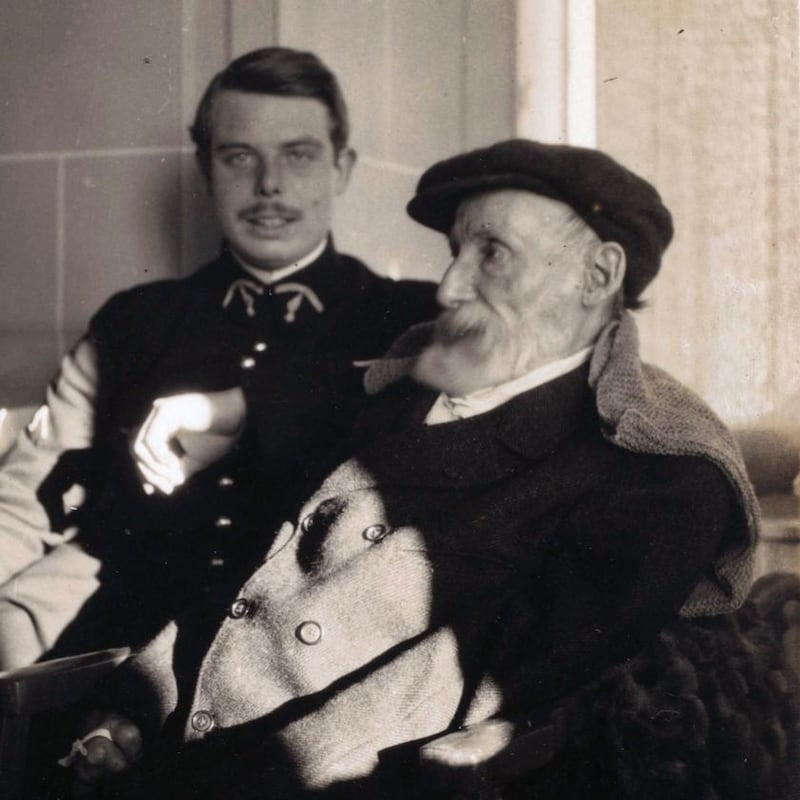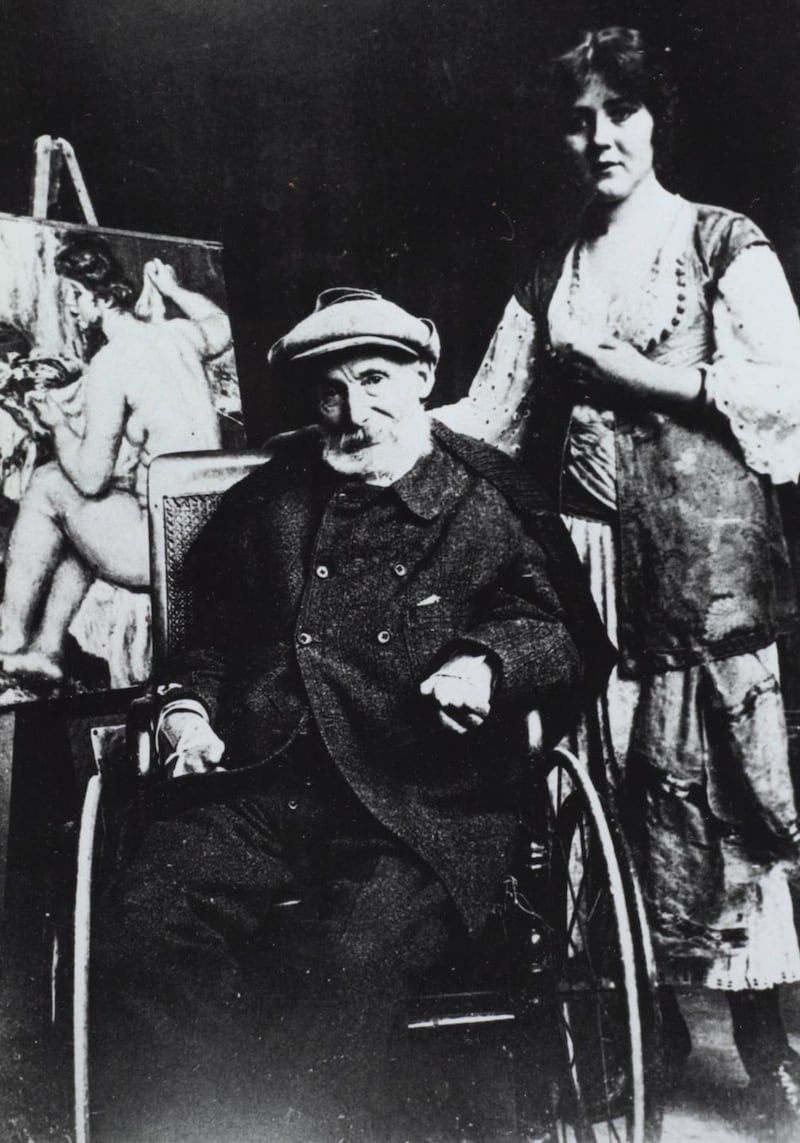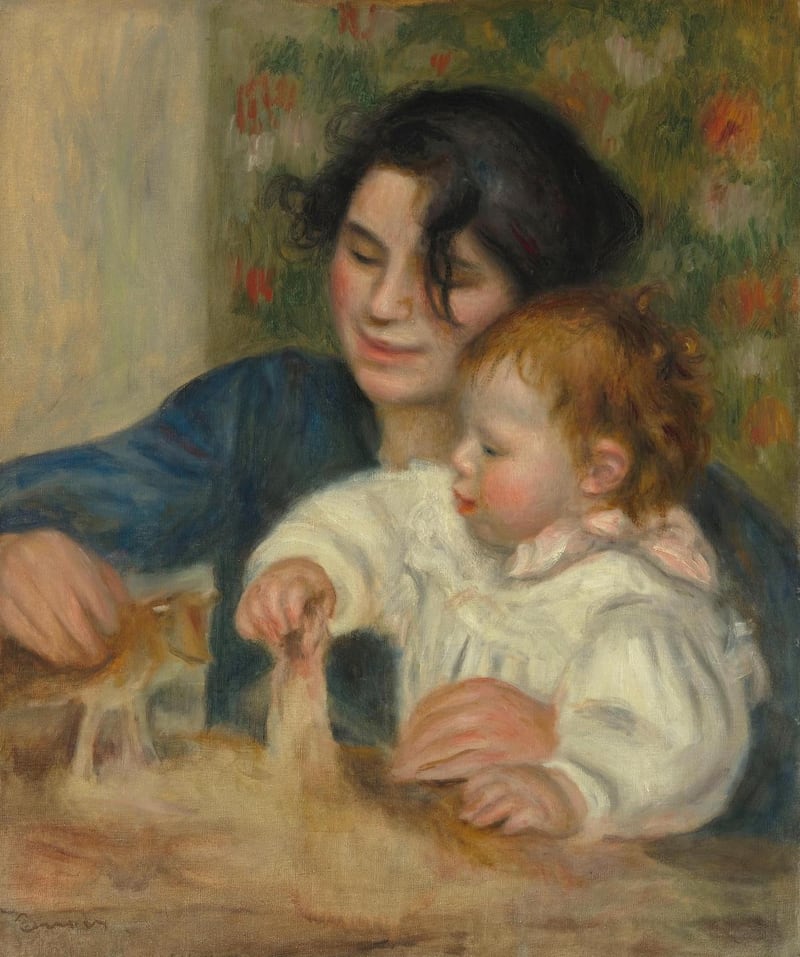Freudians would have a field day with the film director Jean Renoir. His father, the impressionist painter Pierre-Auguste Renoir, was 53 when Jean was born. Jean grew up surrounded by paintings of naked women, married his father's last model and later brought his childhood nursemaid to live beside him. She was his mother's first cousin, one of the painter's favourite models and perhaps his mistress.
"I have spent my life trying to determine the extent of the influence of my father upon me," Jean Renoir wrote in 1974, in his book My Life and My Films. He said he alternated between trying to escape from Pierre-Auguste and "dwelling on the precepts I gleaned from him".
The exhibition Renoir: Father and Son / Painting and Cinema, recently moved from the Barnes Foundation, in Philadelphia, to the Musée d'Orsay, in Paris, where it remains until the new year.
The exhibition factually records the way the son inherited his father's loves, without delving into the deeper psychological implications of those beautifully painted breasts
"It is quite an exceptional, if not a unique, situation in the history of art, to have a father and son play such significant roles in their fields," Sylvie Patry of the Musée d'Orsay says.
The exhibition explores in detail how Pierre-Auguste’s painting inspired Jean’s films. It factually records the way the son inherited his father’s loves, without delving into the deeper psychological implications of those beautifully painted breasts.
The show also documents the warm friendship between Jean Renoir and Dr Albert Barnes, a Philadelphia chemist who earned a fortune from a silver-nitrate antiseptic useful in treating venereal disease. He devoted that fortune to art, purchasing among other treasures most of Jean’s ceramics and many of the fleshy, red-tinged nudes that Pierre-Auguste painted at the end of his life, and which were savaged by critics. Today the Barnes Foundation has 181 Renoirs, the world’s largest collection.

At first glance, father and son were extremely different. Pierre-Auguste fulfilled everyone’s stereotypical image of an impressionist painter. With his black beret and grey beard, he seems to recede into the past. Jean belonged to the 20th century. He fought and was wounded in the first World War. He embraced cinema, the 20th-century art form par excellence, and was at the forefront of cinematic innovation, moving from silent films to talkies, from black and white to Technicolor.
Yet Jean took inspiration from his father's milieu, including the writings of Flaubert, Maupassant and Zola, and the paintings of Manet and Toulouse-Lautrec. He claimed to belong in the 19th century, and retained something of its sensibility. Pierre-Auguste's aesthetic legacy permeated his son's films. As a true impressionist, Pierre-Auguste painted outdoors. Jean shot numerous films, including A Day in the Country, Picnic on the Grass and The River, en plein air.
A Day in the Country is considered Jean Renoir's most impressionistic film. It is a happy story with a bitter-sweet ending, based on an 1881 novella by Maupassant. Renoir rigged a sling for the cameraman, his nephew Claude Renoir, to immortalise Sylvia Bataille on a swing, an obvious homage to his father's 1876 masterpiece, The Swing, but also a wink at the 18th-century rococo painter Jean-Honoré Fragonard, when Renoir showed Bataille's petticoats.
Renoir shot A Day in the Country in the summer of 1936 on the banks of the River Loing, where Pierre-Auguste had painted. The 40-minute film remained unfinished for a decade. Then it became a classic, adulated by François Truffaut and other new-wave directors.
Nénette, the female lead in Picnic on the Grass (1959), is a modern young woman who wants to conceive a child by artificial insemination. But when she chases a goat through high grass at Les Collettes, the Renoir family home near Nice, she looks like a figure in one of Pierre-Auguste's landscapes.
Pierre-Auguste Renoir suffered from severe rheumatoid arthritis and grew progressively paralysed over the last two decades of his life. In Renoir, My Father, Jean's 1962 biography of Pierre-Auguste, he recounted that before the first World War a Viennese doctor temporarily restored Pierre-Auguste's use of his legs. But the painter abandoned treatment because he feared it would deplete the strength he needed for painting. "I prefer painting to walking!" he said.
Despite his suffering, Pierre-Auguste's art remained sensual, light and optimistic. "You must embellish!" he told his fellow painter Pierre Bonnard.
By contrast, Jean’s war experience, his adaptations of 19th-century naturalist writers, and the medium of cinema itself endowed his work with a moody realism not present in his father’s oeuvre.

The father's last muse as a painter became the son's first muse as a film-maker
Two women profoundly marked the lives of Pierre-Auguste and Jean Renoir. Both modelled for Pierre-Auguste, and both extended their love from father to son.
Pierre-Auguste's wife and Jean's mother, born Aline Charigot, died of illness and exhaustion in 1915. She had travelled across France to find her two eldest sons after both were wounded in the war. Before Aline died, Jean wrote, she made a "last present" to her husband, a model called Andrée Heuschling, known as Dédée. Aline recruited her at the painting academy in Nice.
When she first came to Les Collettes, Heuschling was “sixteen years old, red-haired, plump, and her skin ‘took the light’ better than any model that Renoir had ever had in his life,” Jean Renoir wrote. “She sang, slightly off key, the popular songs of the day; told stories about her girlfriends; was gay; and cast over my father the revivifying spell of her joyous youth.”
Pierre-Auguste painted Heuschling at least 100 times in the last four years of his life. “Andrée was one of the vital elements which helped Renoir to interpret on his canvas the tremendous cry of love he uttered at the end of life,” Jean wrote.

Jean said a German sniper “did me the favour of putting a bullet through my leg” in 1915. He returned home to convalesce, and found Heuschling modelling for his father. “Every evening she went home to Nice, and after she left the house seemed sad.”
Jean fell into the habit of driving the model home. They married a month after Pierre-Auguste died. Jean claimed he became a film-maker because he wanted to make Dédée a star. The father’s last muse as a painter became the son’s first muse as a film-maker.
Heuschling renamed herself Catherine Hessling and starred in half a dozen silent films by Jean Renoir, including Nana, from 1926, based on Zola's novel. The film was a financial disaster that swallowed up much of Jean's inheritance. He believed Hessling had overacted and cast another woman in his first talkie. Both interpreted it as a betrayal. The marriage ended.
Jean Renoir drew his epic film about the first World War, Grand Illusion, from his own experiences. Shot two years before the outbreak of the second World War, the "grand illusion" of its title was the belief that there could not be another conflict. The kind German widow who saves two escaped French prisoners shows them her family photographs. Her husband and brothers were killed at Verdun, Liège, Charleroi and Tannenberg, she says bitterly; "Our greatest victories."
The Rules of the Game, from 1939, recounts an upper-class weekend hunting party. Renoir echoed his father's 1910 painting of him, Jean as a Huntsman, by donning tweed breeches and jacket to act in the film. Pierre-Auguste painted his son more than 60 times, but Jean as a Huntsman was the only portrait his son kept with him his whole life.


Two decades before Andrée Heuschling arrived to illuminate Pierre-Auguste Renoir's last years, an earlier model inspired the painter and captured his son's heart. Gabrielle Renard, one of Aline Renoir's cousins, was a country girl from Aline's home village of Essoyes, in eastern France. She was 16 when she came to Paris to be the infant Jean's nursemaid.
Gabrielle raised Jean Renoir. Pierre-Auguste's paintings of Gabrielle and Jean are his most tender. But Gabrielle could also be exquisitely sensual, as in Gabrielle with a Rose, painted in 1911. Two years later Aline sent Gabrielle away, out of jealousy, according to the American painter Mary Cassatt.
Jean Renoir was Gabrielle’s witness when she married the American painter Conrad Slade, who looked and painted like Pierre-Auguste Renoir. She named her only son Jean, and after Jean and his wife moved to Beverly Hills, in 1940, Gabrielle and her family moved in next door, at his request.
In the epilogue to My Life and My Films Renoir addressed himself directly to Gabrielle. "My farewell to my childhood world may be expressed in very few words," he wrote, "Wait for me, Gabrielle."
Renoir: Father and Son / Painting and Cinema is at the Musée d'Orsay, Paris, until January 27th, 2019












